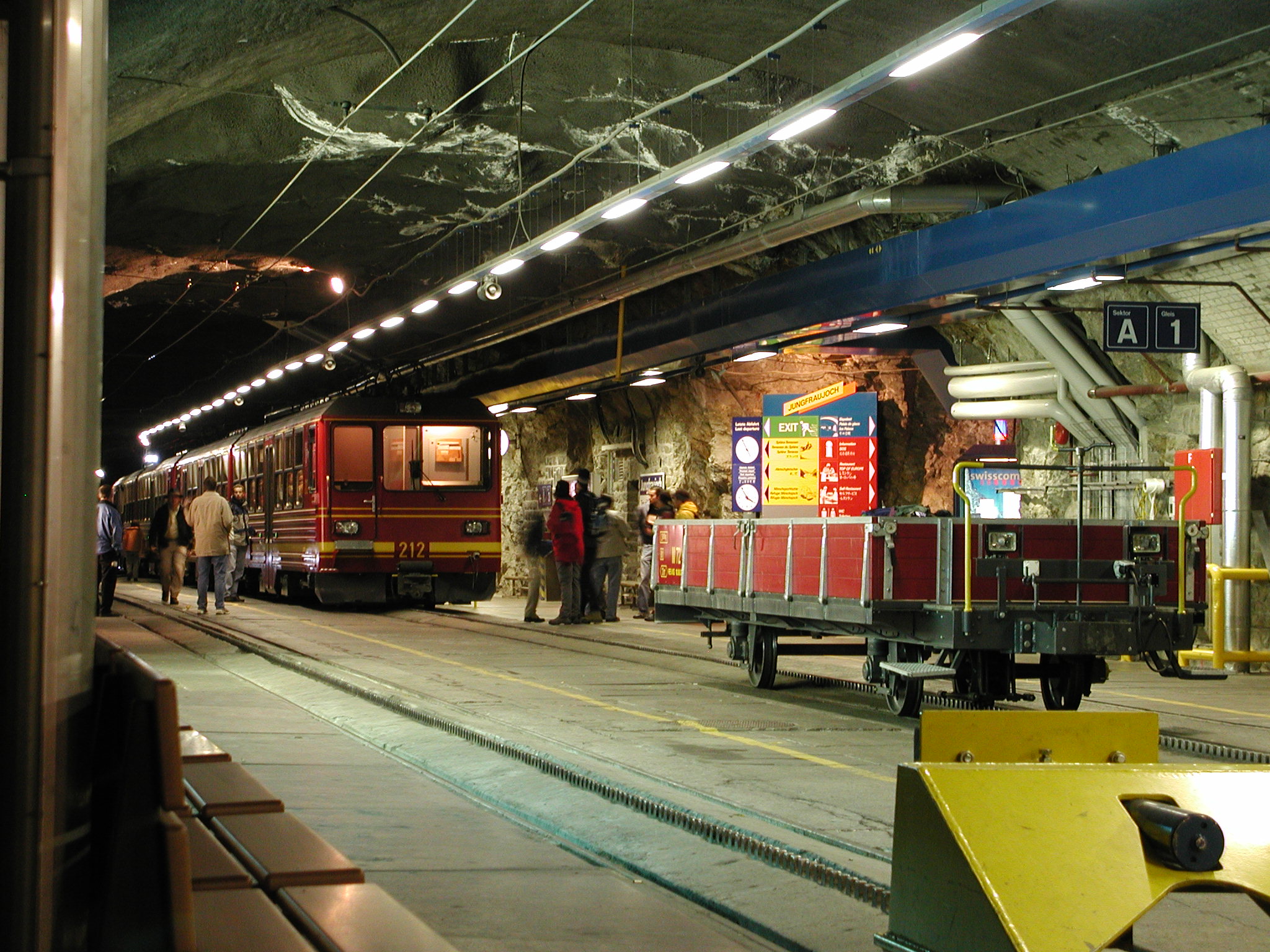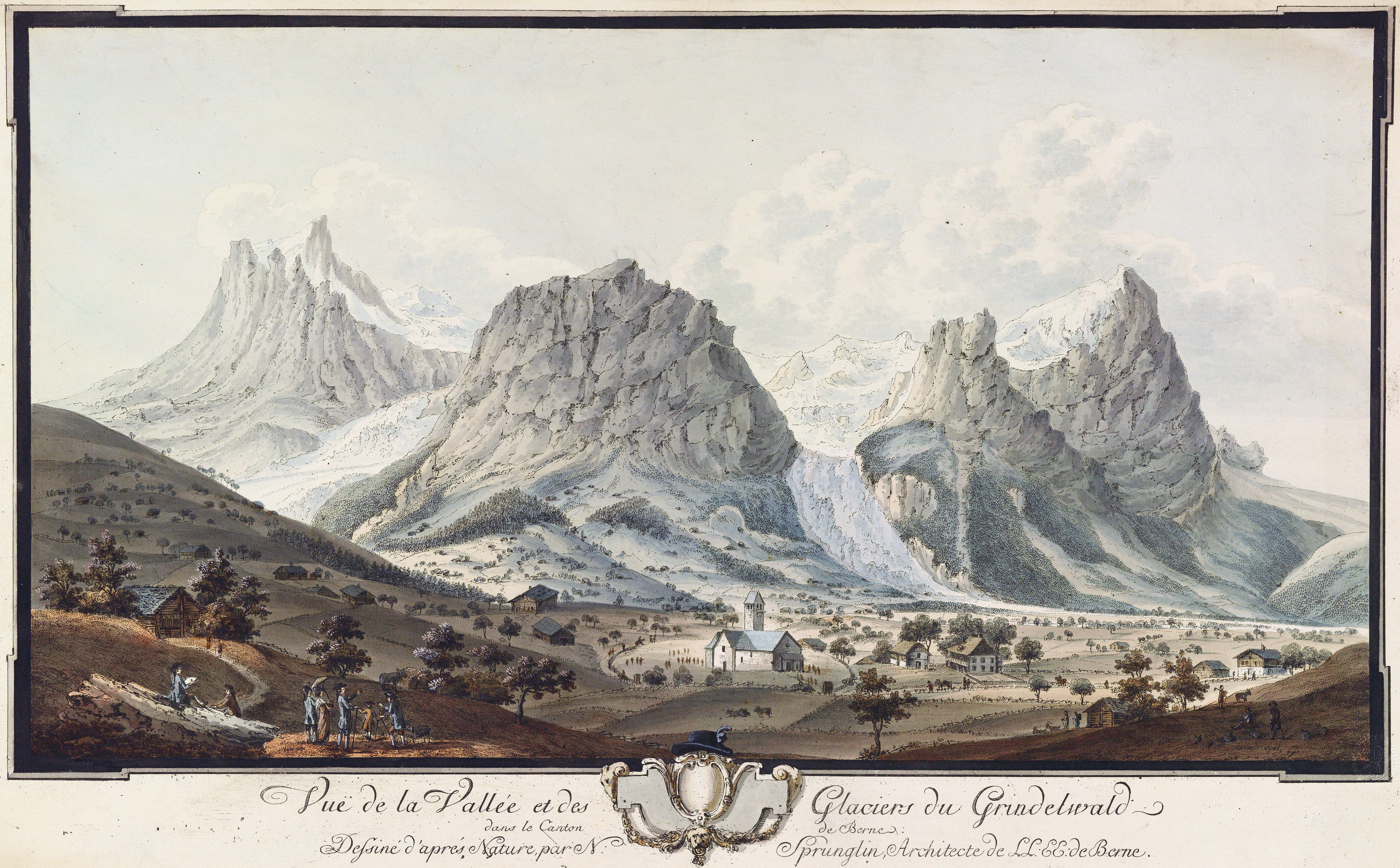|
Lütschental Railway Station
Lütschental railway station () is a railway station in the village and municipality of Lutschental in the Switzerland, Swiss canton of Bern. The station is on the Berner Oberland Bahn, whose trains operate services to Interlaken Ost and Grindelwald. Services the following rail services stop at Lütschental: * Regio (Swiss railway train), Regio: half-hourly service between and . Lütschental power station Jungfraubahn AG run a hydro-electric power station at Lütschental that supplies the Jungfrau Railway, Schynige Platte Railway, Berner Oberland Railway, Wengernalp Railway and Mountain Railway Lauterbrunnen-Mürren as well as the municipalities Lütschental, Gündlischwand, Zweilütschinen and Burglauenen railway station, Burglauenenen with electricity. References External links * * Railway stations in the canton of Bern Bernese Oberland Railway stations Railway stations in Switzerland opened in 1890 {{Switzerland-railstation-stub ... [...More Info...] [...Related Items...] OR: [Wikipedia] [Google] [Baidu] |
Lütschental
Lütschental is a village and a municipality in the Interlaken-Oberhasli administrative district in the canton of Bern in Switzerland. History Lütschental is first mentioned in 1238 as ''Liscinthal''. In 1275 it was mentioned as ''Lyzental''. During the Middle Ages the Lütschine valley was part of the ''Herrschaft'' of Unspunnen. During the 13th and 14th centuries, Interlaken Monastery acquired land and rights in the village until they eventually owned most of the land and people in the area. In 1349 the residents of the village joined other villages in the Bernese Oberland in an unsuccessful rebellion against the monastery. In 1528, the city of Bern adopted the new faith of the Protestant Reformation and began imposing it on the Bernese Oberland. Lütschental joined many other villages and the monastery in an unsuccessful rebellion against the new faith. After Bern imposed its will on the Oberland, they secularized the monastery and annexed all the monastery lands. L ... [...More Info...] [...Related Items...] OR: [Wikipedia] [Google] [Baidu] |
Interlaken Ost
Interlaken Ost or Interlaken East is a railway station in the resort town of Interlaken in the Switzerland, Swiss canton of Bern. The station was previously known as Interlaken Zollhaus. The town has one other station, Interlaken West. Interlaken Ost is an important railway junction at the meeting point of three railway lines, the Thunersee railway, Thunersee line of the BLS AG, the Brünig railway line, Brünig line of the Zentralbahn, and the Bernese Oberland railway (BOB). In addition to trains operated directly by the owners of these lines, the station is also reached by passenger trains of the Swiss Federal Railways, Deutsche Bahn, all of which operate over the Thunersee line. The station provides an interchange with the local bus network provided by PostBus Switzerland and the regional bus line to Thun provided by Verkehrsbetriebe STI. Ships of the BLS-owned fleet on Lake Brienz serve a quay at Interlaken Ost, which they access via a navigable reach of the Aar, Aar river. ... [...More Info...] [...Related Items...] OR: [Wikipedia] [Google] [Baidu] |
Railway Stations In The Canton Of Bern
Rail transport (also known as train transport) is a means of transport using wheeled vehicles running in tracks, which usually consist of two parallel steel rails. Rail transport is one of the two primary means of land transport, next to road transport. It is used for about 8% of passenger and freight transport globally, thanks to its energy efficiency and potentially high speed.Rolling stock on rails generally encounters lower frictional resistance than rubber-tyred road vehicles, allowing rail cars to be coupled into longer trains. Power is usually provided by diesel or electric locomotives. While railway transport is capital-intensive and less flexible than road transport, it can carry heavy loads of passengers and cargo with greater energy efficiency and safety. Precursors of railways driven by human or animal power have existed since antiquity, but modern rail transport began with the invention of the steam locomotive in the United Kingdom at the beginning of the 19th ... [...More Info...] [...Related Items...] OR: [Wikipedia] [Google] [Baidu] |
Burglauenen Railway Station
Burglauenen railway station () is a railway station in the municipality of Grindelwald in the Swiss canton of Bern. The station is on the Berner Oberland Bahn, whose trains operate services to Interlaken Ost and Grindelwald Grindelwald is a village and Municipalities of Switzerland, municipality in the Interlaken-Oberhasli (administrative district), Interlaken-Oberhasli administrative district in the Cantons of Switzerland, canton of Bern (canton), Berne. In additio .... It takes its name from the nearby settlement of Burglauenen. Services the following rail services stop at Burglauenen: * Regio: half-hourly service between and . References External links * * {{DEFAULTSORT:Burglauenen Railway Station Railway stations in the canton of Bern Bernese Oberland Railway stations Railway stations in Switzerland opened in 1890 ... [...More Info...] [...Related Items...] OR: [Wikipedia] [Google] [Baidu] |
Gündlischwand
Gündlischwand is a village and municipality in the Interlaken-Oberhasli administrative district in the canton of Bern in Switzerland. Besides the village of Gündlischwand, the municipality also includes the hamlet of Zweilütschinen. History Gündlischwand is first mentioned in 1331 as ''Gundlisswant''. During the Middle Ages parts of the Lütschine valley were owned by a variety of local nobles. By 1331, Interlaken Monastery acquired the land and rights to the village of Gündlischwand. It remained under the monastery's control until 1528 when Bern adopted the new faith of the Protestant Reformation and secularized the monastery and all its land. The modern municipality also includes the village of Zweilütschinen at the confluence of the White and Black Lütschine rivers. In 1580 a bridge was built over the rivers at Zweilütschinen, allowing more local trade to flow through the village. In the late 16th century rich ore deposits were discovered in the Lauterbrunnen v ... [...More Info...] [...Related Items...] OR: [Wikipedia] [Google] [Baidu] |
Schynige Platte
The Schynige Platte (''Scheinige Platte'' on the old Siegfried Map) is a small mountain ridge and a viewpoint in the Bernese Highlands and belongs to the Schwarzhorn group. The mountain range consists of three peaks: Gumihorn (), Tuba (), and the closest summit next to the viewpoint, Geiss (). The viewpoint lies at an altitude of about , at the western end of a prominent ridge of the Schwarzhorn group, which separates the valley of the Schwarze Lütschine from Lake Brienz. It is notable for its hotel and, since 1893, its mountain railway, one of the highest in Switzerland. In good weather conditions there are views to many surrounding mountains, including the Eiger, Mönch, Jungfrau, and others giants of the Bernese Alps. Also, the town of Interlaken and the two great lakes of Thun and Brienz are visible to the north, lower. The area is accessible via the Schynige Platte railway, which runs from Wilderswil, where connection is made with Bernese Oberland railway trains fr ... [...More Info...] [...Related Items...] OR: [Wikipedia] [Google] [Baidu] |
Jungfraubahn
The Jungfrau Railway (, , JB) is a mountain rack railway in the Bernese Alps, Switzerland, connecting Kleine Scheidegg in the Bernese Oberland to the Jungfraujoch, across the Valais border. It is the highest railway in Switzerland and Europe, running from the station of Kleine Scheidegg () to the Jungfraujoch (), well above the perennial snow line. As a consequence, the railway runs essentially within the Jungfrau Tunnel, built into the neighbouring Eiger and Mönch, to protect the line from snow and extreme weather. The Jungfrau Railway got its name from the highest of the three high peaks above it: the Jungfrau (; ), which was the initial goal of the project. A lift connecting the summit of the Jungfrau with an underground railway was planned. In 1912, the project ultimately ended at the Jungfraujoch, the saddle between the Mönch and Jungfrau. It was one of the highest railways in the world at the time of its inauguration. At Kleine Scheidegg the Jungfrau Railway connects w ... [...More Info...] [...Related Items...] OR: [Wikipedia] [Google] [Baidu] |
Regio (Swiss Railway Train)
Regional rail is a public rail transport service that operates between towns and cities. These trains operate with more stops than inter-city rail, and unlike commuter rail, operate beyond the limits of urban areas, connecting smaller cities and towns. In North America (e.g. the United States), "regional rail" is often used as a synonym for "commuter rail", often using "commuter rail" to refer to systems that primarily or only offer service during rush hour while using "regional rail" to refer to systems that offer all-day service. In Europe, regional trains have their own category, often abbreviated to R ( RB in Germany) or L (for local train). Characteristics Regional rail provides services that link settlements to each other, unlike commuter rail which links locations within a singular urban area. Unlike inter-city services, regional trains stop at more stations and serve smaller communities. They may share routes with inter-city services, providing service to settlements ... [...More Info...] [...Related Items...] OR: [Wikipedia] [Google] [Baidu] |
Grindelwald
Grindelwald is a village and Municipalities of Switzerland, municipality in the Interlaken-Oberhasli (administrative district), Interlaken-Oberhasli administrative district in the Cantons of Switzerland, canton of Bern (canton), Berne. In addition to the village of Grindelwald, the municipality also includes the settlements of Alpiglen, Burglauenen, Grund, Itramen, Mühlebach, Schwendi, Tschingelberg and Wargistal. Grindelwald village is AMSL, above sea level. Mentioned for the first time in 1146, it has become an important tourist destination of both Switzerland and the Alps since the golden age of alpinism in the 19th century. It is overlooked by a section of the Bernese Alps from the Wetterhorn to the Eiger, which creates a natural barrier. Together with the adjacent valley of Lauterbrunnen, the valley of Grindelwald forms part of the Jungfrau Region of the Bernese Oberland, between Interlaken and the main crest of the Bernese Alps. Similarly to Lauterbrunnen, Grindelwald is ... [...More Info...] [...Related Items...] OR: [Wikipedia] [Google] [Baidu] |
Canton Of Bern
The canton of Bern, or Berne (; ; ; ), is one of the Canton of Switzerland, 26 cantons forming the Switzerland, Swiss Confederation. Its capital city, Bern, is also the ''de facto'' capital of Switzerland. The bear is the heraldic symbol of the canton, displayed on a red-yellow background. Comprising Subdivisions of the canton of Bern, ten districts, Bern is the second-largest canton by both surface area and population. Located in west-central Switzerland, it is surrounded by eleven cantons. It borders the cantons of canton of Jura, Jura and canton of Solothurn, Solothurn to the north. To the west lie the cantons of canton of Neuchâtel, Neuchâtel, canton of Fribourg, Fribourg, and canton of Vaud, Vaud. To the south lies the cantons of canton of Valais, Valais. East of the canton of Bern lie the cantons of Canton of Uri, Uri, Canton of Nidwalden, Nidwalden, Canton of Obwalden, Obwalden, Canton of Lucerne, Lucerne and Canton of Aargau, Aargau. The geography of the canton includes ... [...More Info...] [...Related Items...] OR: [Wikipedia] [Google] [Baidu] |





